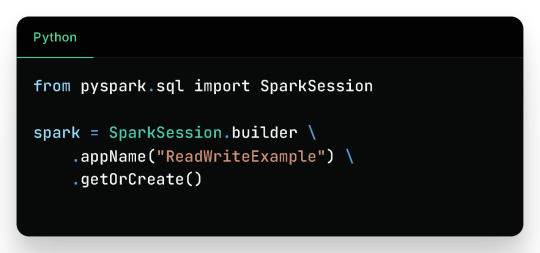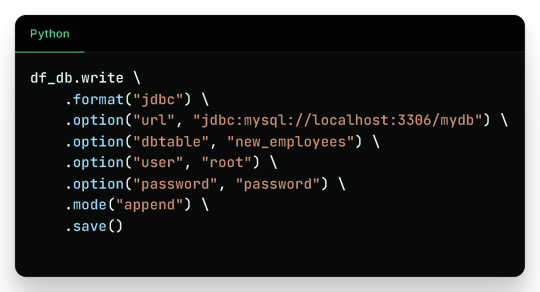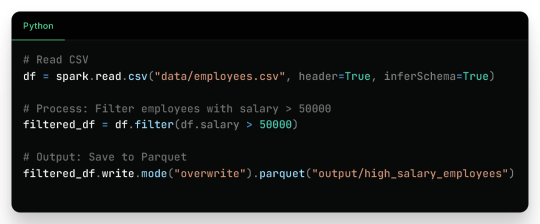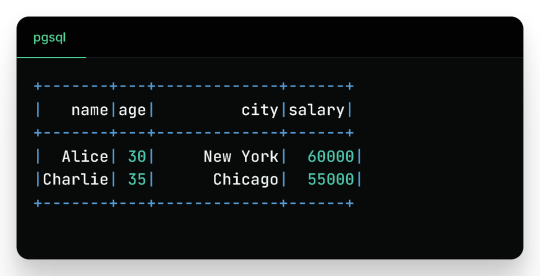#Data Appending Email Appending
Explore tagged Tumblr posts
Text
TARGET DECISION MAKER DATABASE FOR YOUR BUSINESS

Is your marketing team require defined target audience?
At Navigant, our Target Decision Maker (TDM) Database Services are administered by a distinct, specialized team of professionals. This team excels in various data-related tasks, including data sourcing, organizational data profiling, data cleansing, data verification, data validation, and data append.
Our backend team goes beyond mere data extraction. They possess the experience to grasp the campaign's objectives, target audience, and more. They strategize and plan campaign inputs, share market insights to refine the approach, depth, and reach, and even forecast potential campaign outcomes.
Book A Meeting: https://meetings.hubspot.com/sonal-arora
Contact us Web: https://www.navigant.in Email us at: [email protected] Cell: +91 9354739641
#Navigant#database#dataprofiling#generation#demandgeneration#marketing#socialmediamarketing#business#seo#emailmarketing#marketingstrategy#leads#sales#socialmedia#contentmarketing#onlinemarketing#marketingtips#branding#leadgenerationstrategy#entrepreneur#smallbusiness#salesfunnel#leadgen#advertising
2 notes
·
View notes
Text
How to Use ContactFormToAPI to Connect Your Static HTML Forms to Zapier
In the modern web development landscape, building fast, secure, and serverless websites is more popular than ever. Static sites are blazing fast, cost-effective, and often hosted on platforms like GitHub Pages, Netlify, or Vercel. But one lingering challenge remains: how do you handle form submissions without a traditional backend?

Enter ContactFormToAPI, a powerful no-code solution that connects static HTML forms directly to any API endpoint, including Zapier. By bridging this gap, you can easily automate workflows, capture leads, and integrate with countless apps—without spinning up a backend or writing server-side logic.
In this guide, we’ll walk through how to use ContactFormToAPI to connect your static HTML forms to Zapier, so you can trigger zaps every time someone submits a form on your website.
What You'll Need
A simple HTML website or static site (can be hosted anywhere)
A Zapier account (free or paid)
A ContactFormToAPI account (free tier available)
Step 1: Create Your HTML Form
Here’s a basic contact form you might include in your HTML site:
<form id="contactForm" method="POST" action="https://contactformtoapi.com/api/YOUR_UNIQUE_ENDPOINT">
<input type="text" name="name" placeholder="Your Name" required>
<input type="email" name="email" placeholder="Your Email" required>
<textarea name="message" placeholder="Your Message" required></textarea>
<button type="submit">Send</button>
</form>
Note: You’ll replace YOUR_UNIQUE_ENDPOINT with the actual endpoint provided by ContactFormToAPI. We'll set that up next.
Step 2: Create a Zap in Zapier
Zapier is an automation platform that connects your apps and services. Our goal here is to make a Zap that triggers when a form is submitted via ContactFormToAPI.
1. Log in to Zapier
Visit zapier.com and sign in.
2. Create a New Zap
Click the “+ Create Zap” button.
3. Set the Trigger App to "Webhooks by Zapier"
Select Webhooks by Zapier as your trigger app.
Choose Catch Hook as the trigger event.
Zapier will now generate a unique webhook URL. Copy this URL—we'll use it in the next step.
Step 3: Set Up ContactFormToAPI
Go to the Contact Form to Any API and sign in or create a free account.
1. Create a New Form Endpoint
Click “New Form” or “Create Endpoint.”
Name your form (e.g., "Zapier Contact Form").
In the Webhook URL, paste the Zapier webhook URL you copied earlier.
(Optional) Enable reCAPTCHA or set a redirect URL after submission.
Click Save to generate your unique endpoint URL.
2. Update Your HTML Form
Replace YOUR_UNIQUE_ENDPOINT in your form’s action attribute with the new endpoint URL provided by ContactFormToAPI.
Example:
<form action="https://contactformtoapi.com/api/abcd1234">
3. Test the Form Submission
Fill out and submit the form on your website.
Zapier should detect the test data, and you’ll be prompted to move to the next step in building your Zap.
Step 4: Configure the Zap Action
After Zapier catches the hook, you'll configure what happens next:
1. Choose an Action App
Select any app where you'd like the form data to go:
Gmail (send email notification)
Google Sheets (log new entries)
Slack (send a message to a channel)
Notion, Trello, Airtable, Mailchimp, etc.
2. Map the Form Fields
Zapier will show the form fields (name, email, message). Match these fields with the action app's fields.
3. Turn On Your Zap
Click Publish Zap to activate it. Your static form is now fully connected!
Real-World Use Cases
Here are some creative ways you can use ContactFormToAPI + Zapier:
Newsletter Signup: Collect emails and add them to Mailchimp.
Support Form: Create a ticket in Trello or Zendesk.
Lead Generation: Send qualified leads directly to your CRM.
Job Application Form: Upload applicant details to Google Drive and notify HR in Slack.
Survey Feedback: Append responses to a Google Sheet for analysis.
Benefits of Using ContactFormToAPI with Zapier
No backend needed: Eliminate server setup and maintenance.
No-code friendly: Ideal for marketers and designers.
Fast setup: Get working forms live in minutes.
Highly flexible: Connect with over 5,000 apps via Zapier.
Security ready: Includes spam protection and HTTPS by default.
Tips for Success
Use reCAPTCHA v2 to protect your forms from bots.
Set up redirect URLs for a smoother user experience.
Add error handling by showing fallback messages if the form fails.
Log form data to a Google Sheet as a backup.
Conclusion
Thanks to ContactFormToAPI and Zapier, static websites can now have fully functional, automated forms without a backend. Whether you're building a landing page, portfolio, or marketing site, this powerful combo enables you to collect and route form data with ease.
0 notes
Text
Top US Address Verification Competitors & Alternatives 2025
Address verification has become a cornerstone of modern logistics, eCommerce, and data management. In 2025, businesses are increasingly seeking dependable solutions that can handle both domestic and international address validation. Whether it's improving shipping accuracy or enhancing user experience, the right address verification software can make a significant difference. This guide explores the top U.S.-based address verification competitors and their leading alternatives in 2025.

1. Smarty (formerly SmartyStreets)
Overview: Smarty is known for its fast and precise U.S. address verification capabilities. It offers real-time address validation, geocoding, and rooftop-level accuracy.
Key Features:
USPS CASS-certified
Autocomplete API
ZIP+4 and geocoding
Scalable and developer-friendly
Pros:
High speed and uptime
Robust API documentation
Accurate rooftop geocoding
Cons:
Primarily focused on U.S. addresses
Best For: eCommerce, logistics, and enterprise developers
2. Melissa
Overview: Melissa is a global data quality leader offering address verification, data enrichment, and identity verification.
Key Features:
International address verification
Email, phone, and name verification
Data appending services
Pros:
Broad global coverage
Customizable solutions
Cons:
Complex pricing tiers
Best For: Financial services, marketing, and compliance-focused industries
3. Lob
Overview: While primarily known for direct mail automation, Lob also provides address verification tools to ensure mailing accuracy.
Key Features:
USPS address verification
Delivery point validation
Mail tracking integrations
Pros:
Seamless integration with direct mail
Scalable APIs
Cons:
More expensive than alternatives
Best For: Companies integrating direct mail into marketing
4. PostGrid
Overview: PostGrid offers a full suite of address verification tools, including print & mail automation.
Key Features:
Real-time verification APIs
CASS and SERP compliance
International validation
Pros:
Easy API integration
High accuracy rate
Cons:
Limited DIY documentation
Best For: Startups and SMEs scaling their operations
5. Experian Data Quality
Overview: A leader in data intelligence, Experian's address verification tools are enterprise-grade and reliable.
Key Features:
Global address validation
Customer data profiling
CRM and ERP integration
Pros:
Trusted brand name
Excellent customer support
Cons:
High cost
Best For: Large enterprises and data-intensive industries
6. Google Places API
Overview: Google's Places API offers address autocomplete and place recognition powered by its vast data network.
Key Features:
Real-time autocomplete
Location-based suggestions
Google Maps integration
Pros:
Excellent UX
Fast and globally available
Cons:
No postal certification (e.g., USPS CASS)
Best For: Apps focused on location and user experience
7. AddressFinder (U.S. and International)
Overview: AddressFinder specializes in verifying and formatting U.S., NZ, and AU addresses with high precision.
Key Features:
Address autocomplete
Address cleansing
Mail-ready formatting
Pros:
High-speed suggestions
Easy integration
Cons:
Limited global scope
Best For: Regional businesses in the U.S. and Oceania
8. Yext Address Cleaning Tool
Overview: Yext helps manage business listings and includes a built-in address cleansing feature for businesses.
Key Features:
Location data cleaning
Business listing accuracy
Pros:
Supports multi-location businesses
Cons:
Not a dedicated address verification service
Best For: Multi-location businesses managing online presence
youtube
SITES WE SUPPORT
Validate Address With API – Wix
1 note
·
View note
Text
How to Read and Write Data in PySpark
The Python application programming interface known as PySpark serves as the front end for Apache Spark execution of big data operations. The most crucial skill required for PySpark work involves accessing and writing data from sources which include CSV, JSON and Parquet files.
In this blog, you’ll learn how to:
Initialize a Spark session
Read data from various formats
Write data to different formats
See expected outputs for each operation
Let’s dive in step-by-step.
Getting Started
Before reading or writing, start by initializing a SparkSession.

Reading Data in PySpark
1. Reading CSV Files

Sample CSV Data (sample.csv):

Output:

2. Reading JSON Files

Sample JSON (sample.json):

Output:

3. Reading Parquet Files
Parquet is optimized for performance and often used in big data pipelines.

Assuming the parquet file has similar content:
Output:

4. Reading from a Database (JDBC)

Sample Table employees in MySQL:

Output:

Writing Data in PySpark
1. Writing to CSV

Output Files (folder output/employees_csv/):

Sample content:

2. Writing to JSON

Sample JSON output (employees_json/part-*.json):

3. Writing to Parquet

Output:
Binary Parquet files saved inside output/employees_parquet/
You can verify the contents by reading it again:

4. Writing to a Database

Check the new_employees table in your database — it should now include all the records.
Write Modes in PySpark
Mode
Description
overwrite
Overwrites existing data
append
Appends to existing data
ignore
Ignores if the output already exists
error
(default) Fails if data exists
Real-Life Use Case

Filtered Output:

Wrap-Up
Reading and writing data in PySpark is efficient, scalable, and easy once you understand the syntax and options. This blog covered:
Reading from CSV, JSON, Parquet, and JDBC
Writing to CSV, JSON, Parquet, and back to Databases
Example outputs for every format
Best practices for production use
Keep experimenting and building real-world data pipelines — and you’ll be a PySpark pro in no time!
🚀Enroll Now: https://www.accentfuture.com/enquiry-form/
📞Call Us: +91-9640001789
📧Email Us: [email protected]
🌍Visit Us: AccentFuture
#apache pyspark training#best pyspark course#best pyspark training#pyspark course online#pyspark online classes#pyspark training#pyspark training online
0 notes
Text
How to Use Control Flow Activities in Azure Data Factory for Enhanced Orchestration

Azure Data Factory (ADF) is more than just a data movement tool — it’s a powerful orchestration engine. With Control Flow activities, you can create intelligent, conditional, and parallel workflows that make your data pipelines smarter and more efficient.
In this blog, we’ll break down how Control Flow activities work, the different types available, and how to use them effectively to boost your ADF pipeline orchestration.
📌 What Are Control Flow Activities in ADF?
Control Flow activities in ADF define the execution logic of your pipeline — how and when different parts of your pipeline should run. These activities don’t transform data, but they control how data transformation and movement happen.
Think of them as the brain of your pipeline, deciding what happens, when, and under what conditions.
🔄 Types of Control Flow Activities
Here’s a breakdown of the most commonly used Control Flow activities:
1. Execute Pipeline Activity
Use Case: To modularize your logic by running a child pipeline from a parent pipeline.
Example: Reuse a “Data Cleanup” pipeline across multiple ETL processes.
2. If Condition Activity
Use Case: To perform different actions based on a condition.
Example: If a file exists, move to the next step; else, send a failure email.
3. Switch Activity
Use Case: To choose between multiple branches based on a dynamic value.
Example: Run different data transformation pipelines based on the region code (US, EU, APAC, etc.).
4. ForEach Activity
Use Case: To iterate over a collection (like an array of files or databases).
Example: Loop through a list of file names and copy each one to a data lake.
5. Until Activity
Use Case: To run a loop until a condition is met.
Example: Keep checking a folder until a specific file arrives, then proceed.
6. Wait Activity
Use Case: To introduce a delay in your pipeline.
Example: Pause execution for 2 minutes before retrying a failed task.
7. Set Variable / Append Variable
Use Case: Store and manipulate values during pipeline execution.
Example: Track success/failure status of each task dynamically.
🧠 Real-World Use Case: Orchestrating a Sales ETL Process
Here’s how you could combine control flow activities in a single pipeline:
Execute Pipeline — Run a shared “Extract Data” pipeline.
If Condition — Check if extraction was successful.
Switch Activity — Based on the region, run different “Transform” pipelines.
ForEach — Loop through each product category and load data.
Until — Wait until the “Daily Sales Report” file is available.
Wait — Introduce a buffer to avoid API throttling.
Set Variable — Log status at each stage for auditing.
⚙️ Best Practices
Keep pipelines modular using Execute Pipeline.
Avoid infinite loops in Until and ForEach activities.
Use logging variables to track progress and troubleshoot.
Limit nested activities to maintain readability.
Handle failures gracefully with conditional branches.
🚀 Final Thoughts
Control Flow activities turn Azure Data Factory from a simple ETL tool into a full-fledged workflow automation and orchestration platform. By using them strategically, you can design intelligent pipelines that react to real-world scenarios, handle failures, and automate complex data processes with ease.
WEBSITE: https://www.ficusoft.in/azure-data-factory-training-in-chennai/
0 notes
Text
The Ultimate Guide to Data Enrichment
In today’s data-driven world, businesses rely heavily on accurate, complete, and actionable data to make informed decisions. However, raw data often lacks depth and context, limiting its effectiveness. This is where data enrichment comes into play. Data enrichment enhances existing datasets by supplementing them with additional, relevant information, leading to more valuable insights and improved decision-making.

In this comprehensive guide, we will explore the concept of data enrichment, its importance, types, benefits, challenges, and best practices to implement it successfully.
What is Data Enrichment?
Data enrichment is the process of enhancing, refining, and improving raw data by integrating additional external or internal data sources. It helps organizations obtain a more detailed and accurate picture of their customers, prospects, and business operations.
For example, a company may have a basic customer database containing only names and email addresses. By enriching this data with demographic information, purchase history, or behavioral insights, businesses can create more personalized and targeted marketing strategies.
Types of Data Enrichment
There are various types of data enrichment, depending on the kind of information being enhanced. Some of the most common types include:
1. Demographic Enrichment
Adding details such as age, gender, income level, education, and occupation to customer records can help businesses tailor their offerings to specific audience segments.
2. Geographic Enrichment
This involves appending location-based data, such as addresses, zip codes, or GPS coordinates, to customer profiles. Businesses can use this information for targeted advertising, regional promotions, or logistics optimization.
3. Behavioral Enrichment
By integrating browsing history, social media activity, and purchase patterns, companies can gain insights into customer preferences and buying habits, enabling more personalized engagement.
4. Firmographic Enrichment
For B2B companies, enriching data with firmographic details like company size, industry, revenue, and employee count can improve lead segmentation and sales targeting.
5. Contact Enrichment
This involves updating and verifying customer contact details, such as phone numbers, email addresses, and social media profiles, ensuring more effective communication.
6. Financial Enrichment
Financial institutions and fintech companies enrich data with credit scores, transaction histories, and risk assessments to make better lending and investment decisions.
Why is Data Enrichment Important?
Data enrichment is essential for businesses across all industries due to the following reasons:
Improved Customer Insights – Enriched data helps businesses understand their customers better, leading to more effective marketing and sales strategies.
Enhanced Personalization – Personalized communication based on enriched data improves customer engagement and loyalty.
Increased Data Accuracy – Keeping data up-to-date reduces errors and ensures reliable decision-making.
Better Lead Scoring – Businesses can prioritize leads based on enriched data, improving conversion rates.
Stronger Fraud Detection – Enriched data helps detect suspicious activities and reduce fraudulent transactions.
Optimized Business Operations – Companies can use enriched data for demand forecasting, inventory management, and supply chain optimization.
Challenges in Data Enrichment
Despite its advantages, data enrichment comes with its challenges:
Data Quality Issues – If external sources provide incorrect or outdated data, it can lead to inaccuracies.
Privacy and Compliance – Ensuring compliance with regulations like GDPR and CCPA is critical when handling enriched data.
Integration Complexities – Merging enriched data with existing systems can be technically challenging.
Cost and Resources – High-quality data enrichment services often require significant investment.
Overloading Data – Too much data can make it difficult to extract actionable insights and may lead to analysis paralysis.
Best Practices for Effective Data Enrichment
To maximize the benefits of data enrichment, businesses should follow these best practices:
Define Clear Objectives – Understand why you need data enrichment and what insights you hope to gain.
Ensure Data Quality – Use reliable sources and implement regular data validation checks.
Maintain Compliance – Always adhere to data protection regulations to avoid legal risks.
Automate the Process – Utilize AI and machine learning to streamline data enrichment.
Integrate Seamlessly – Ensure enriched data is effectively integrated into your CRM, marketing automation, and analytics tools.
Monitor and Update Data Regularly – Keep your data fresh by continuously updating and enriching it.
Data Enrichment Tools and Services
Several tools and platforms can help businesses enrich their data efficiently. Some popular ones include:
Clearbit – Provides real-time enrichment for B2B businesses.
ZoomInfo – A powerful tool for firmographic data enrichment.
FullContact – Specializes in contact and social media data enrichment.
Experian Data Quality – Ensures data accuracy and validation.
Google BigQuery – Enables large-scale data enrichment and analytics.
Real-World Applications of Data Enrichment
Marketing and Sales
Companies enrich data to create targeted marketing campaigns, segment audiences, and personalize customer interactions.
E-commerce and Retail
Retailers use data enrichment to recommend products based on purchase history and browsing behavior.
Finance and Banking
Financial institutions enrich data for risk assessment, credit scoring, and fraud detection.
Healthcare
Healthcare providers use data enrichment to enhance patient records and improve treatment recommendations.
The Future of Data Enrichment
With advancements in AI, machine learning, and big data analytics, data enrichment is becoming more automated and intelligent. Predictive analytics, real-time data processing, and advanced data visualization will further enhance its effectiveness. Businesses that invest in robust data enrichment strategies will gain a competitive edge in understanding their customers and making informed decisions.
Conclusion
Data enrichment is a powerful process that transforms raw data into a valuable asset for businesses. By integrating additional information, companies can gain deeper insights, enhance customer experiences, and optimize operations. Despite challenges, following best practices and leveraging the right tools can ensure a successful data enrichment strategy.
As businesses continue to generate vast amounts of data, enriching that data will remain essential for staying ahead in today’s competitive market. Investing in data enrichment today can lead to more intelligent decision-making and better business outcomes in the future.
1 note
·
View note
Text
Generate Free Lead List using AI & County Public Data: Property, Tax liens, Permit, Code Violations & Foreclosure Records

Real estate investors, home improvement contractors, and businesses can build robust prospect lists for free by leveraging public data from local county or city websites. Here’s a simple guide to help you get started:
1: Gather Public Data
Most counties and cities update their public records regularly. Look for these key data categories:
Property Ownership & Deed Records
Deeds & Titles: Get details on ownership history, transfers, and any liens.
Tax Records & Assessments
Property Tax Assessments: Review assessed values, tax histories, and delinquency data.
Tax Sale Listings: Identify properties overdue on taxes that might be available at a discount.
Permit Applications & Building Data
Permit Applications: Track projects like roof replacements, solar panel installations, pool additions, or other major improvements.
Code Violations
Code Enforcement Records: Find properties with safety or maintenance issues.
Condemnation & Rehabilitation Notices: Spot properties needing significant repairs, potentially ripe for investment.
Foreclosure, Eviction, & Legal Records
Foreclosure Listings: Locate properties in pre-foreclosure or those heading to auction.
Eviction Records & Legal Filings: Discover data on eviction cases, bankruptcies, or probate proceedings that might signal distressed properties.
2. Export and Format the Data
Depending on the county or city, data may be available in different formats:
CSV Exports: Some websites offer a direct download option.
Online Records: Others display records in batches (e.g., 50-100 per page).
PDF Files: Certain data like tax liens or auction details might be provided as PDFs.
3. Transform Raw Data into Actionable Insights with AI
Instead of manually copying records, use AI tools like ChatGPT to structure your data efficiently:
Direct Extraction: Supply the website URL, and let the AI scrape key details (owner name, address, property status, etc.) into a clean CSV or Excel file.
Manual Upload: Alternatively, copy-paste data or upload PDFs into the AI tool and prompt it to organize the information.
4. Enhance Your Prospect List with Data Append Services
Once you’ve compiled your leads, you might want to add contact details like phone numbers or email addresses. datazapp.com offers a quick and reliable solution to append this crucial information, saving you time and ensuring your lead data is complete.
By following these steps, you can efficiently generate a targeted prospect list from free public records. Whether you choose to harness AI for data extraction or opt for ready-to-use solutions from datazapp.com, you'll be well on your way to smarter, cost-effective lead generation.
#Property Tax#peroperty#tax#foreclosure#foreclosure data#foreclosure list#foreclosure append#Code Violations
0 notes
Text
What Are Data Appending Services & Why Your B2B Business Needs Them?
Many education and training businesses struggle with outdated or incomplete contact lists. Emails bounce back, calls go unanswered, and promising leads slip away. This happens because databases often have missing or incorrect details.
That’s where data appending services help. They add phone numbers, job titles, emails, and other important information to your records, updating and enriching them. This guarantees that the appropriate individuals are reached by your marketing and sales teams, be it HR managers seeking corporate training or educational institutions interested in new educational initiatives.

Email marketing work better, outreach is made simpler, and lead creation is enhanced with precise data. You make contact with actual decision-makers rather than squandering time on faulty contact lists.
Maintaining current data is essential for educational organizations that depend on solid business-to-business connections. More possibilities, improved engagement, and increased conversions are all correlated with accurate data. This post will explain how data appending functions, why it's crucial for generating business-to-business leads, and how to pick the best provider for your company.
What Are Data Appending Services?
Data appending services help businesses fix and improve their contact lists. They fill in missing details like emails, phone numbers, job titles, and company names. This makes it easier to reach the right people.
Over time, business data becomes outdated. People change jobs, companies switch emails, and phone numbers get disconnected. If your database isn’t updated, your emails bounce, calls go unanswered, and marketing campaigns fail.
Data appending solves this problem. It compares your old records with reliable databases, finds missing or incorrect details, and updates them. This keeps your contact list accurate and useful.
There are different types of data appending:
Email appending – Adds or updates email addresses.
Phone appending – Finds correct phone numbers.
Demographic appending – Adds details like job title and company size.
Social media appending – Links contacts to their LinkedIn or Twitter profiles.
For education and training businesses, this means better outreach to HR managers, schools, and corporate clients. Instead of wasting time on bad data, you connect with real decision-makers.
Why Your Education & Training Business Needs Data Appending Services?
Reaching the right people is the key to growing any education or training business. But if your contact list is outdated, your emails won’t be read, and your calls won’t be answered. Data appending services help fix this by updating missing or incorrect information.
Better Lead Generation
If you’re targeting schools, universities, or companies for training programs, you need accurate contacts. Data appending ensures you have the right emails and phone numbers of decision-makers like HR managers and training coordinators.
Improved Email Marketing
Email campaigns only work if they reach the inbox. With updated emails, you reduce bounce rates and improve open rates. This means better engagement and more leads.
Stronger Sales Outreach
Sales teams waste time on bad data. With correct phone numbers and job titles, they connect with the right people faster, leading to higher conversions.
Saves Time and Resources
Instead of manually searching for updated contacts, your team can focus on closing deals and building relationships.
Keeps You Compliant
Outdated databases can violate data privacy rules. Appended data follows legal standards, keeping your outreach safe and ethical.
For education businesses, clean data means more enrollments, stronger partnerships, and better marketing results.
How to Choose the Right Data Appending Service for Your Education Business?
Not all data appending services are the same. Choosing the right one ensures your contact lists stay accurate, helping you connect with schools, universities, and corporate training clients. Here’s what to look for:
1. Accuracy and Reliability
The service should use trusted sources to update your data. Ask how they verify information to avoid errors.
2. Industry Experience
A provider that works with education businesses understands your needs better. They can help you find the right contacts, such as training managers and HR decision-makers.
3. CRM and Email Integration
Updating contacts should be simple. Choose a service that works with your CRM and email marketing tools. This saves time and reduces manual work.
4. Data Privacy Compliance
Ensure the service follows data protection laws like GDPR and CCPA. This keeps your outreach legal and ethical.
5. Customer Support
A good provider offers help when you need it. Look for one that answers questions quickly and provides ongoing support.
The right data appending service helps your education business reach more prospects, improve marketing, and boost enrollments.
The Future of Data Appending in the Education & Training Industry
As education and training businesses rely more on digital outreach, keeping contact lists updated will become even more important. Data appending services are changing to meet this demand, making it easier to reach the right people.
1. AI and Automation
New tools powered by artificial intelligence (AI) are making data appending faster and more accurate. These systems scan large databases in seconds, ensuring your contact list stays fresh without manual work.
2. Real-Time Data Updates
Instead of updating records once in a while, businesses will soon have access to real-time data updates. This means fewer bounced emails and faster connections with decision-makers.
3. Predictive Analytics
Predictive tools will help businesses find the best leads by analyzing past data. This can help education providers focus on contacts most likely to enroll or invest in training programs.
4. Stronger Privacy Measures
As data protection laws grow stricter, data appending services will need to follow even tighter security rules. Choosing a provider that values privacy will be key.
In the future, businesses that keep their data clean and updated will have a big advantage. Staying ahead with the right tools can mean better outreach, more leads, and stronger relationships.
Conclusion & Call to Action
Having the right contact information can make a big difference in your education or training business. Missed chances result from outdated data, but a B2B data company offering data appending services can keep your records up to date. Having up-to-date phone numbers, email addresses, and job titles will help you reach decision-makers more quickly and enhance your marketing outcomes.
As technology advances, data appending will become even more accurate and effective. Businesses that invest in clean data will see higher engagement, better conversions, and stronger connections with potential customers.
If you're ready to improve outreach, update your contact lists today. Find a trusted B2B data company that meets your needs and start targeting the right people now. Accurate data leads to better results, don’t let outdated information hold your business back.
0 notes
Text
Marketing attribution, especially with UTM parameters, remains a significant challenge for many industry marketers. While some marketers have become adept at using attribution models, a substantial portion still struggle with them. Here are some key points: Current State of UTM Attribution - Adoption and Mastery: Many marketers have embraced UTM parameters and are proficient in using them for tracking and attribution. However, mastering the full spectrum of attribution models, especially multi-touch attribution (MTA), remains a challenge. - Struggles with Attribution Models: Approximately 40-50% of marketers face difficulties with attribution models (Source). Common issues include: - Inconsistent UTM Tagging: Variations in tagging conventions can lead to inaccurate data. - Cross-Device and Cross-Browser Tracking: Tracking users across multiple devices and browsers is complex and often results in incomplete data. - Privacy Regulations: Increasing privacy regulations and the move towards a cookieless world have made tracking more challenging. - Choosing the Right Model: Selecting the appropriate attribution model (first-click, last-click, linear, time decay, etc.) can be daunting. Industry Trends - Shift Towards Advanced Models: There's a growing trend towards using more sophisticated models, such as data-driven attribution and machine learning, to gain deeper insights. - Automation Tools: Many companies are turning to automated solutions to standardize UTM tagging and improve data accuracy. - Focus on Data Quality: Ensuring clean and consistent data is a top priority for marketers to make accurate attribution decisions. As you might already know, understanding the effectiveness of your campaigns is paramount. This is where UTM (Urchin Tracking Module) parameters and strategic cookie configuration become essential tools for unlocking precise marketing attribution. UTM parameters act as digital breadcrumbs, meticulously tracking the origin of your website traffic. These are the special tags appended to your URLs, offering insights into whether a visitor arrived from a social media post, an email campaign, a paid advertisement, or another source. Consider them as detailed notes left by each visitor, revealing their unique journey to your website. However, the value of these insights is significantly diminished if they are not stored and managed effectively. This is where cookies come into play. Cookies serve as a secure repository for these valuable notes, ensuring they remain associated with the visitor as they navigate your website. Without cookies, these crucial insights could be lost, leaving you with a fragmented understanding of your marketing impact and hindering your ability to make informed decisions. By meticulously configuring cookies to work in harmony with UTM parameters, you ensure that the entire customer journey, from initial click to final conversion, is accurately captured. This persistent tracking, across various pages and sessions, creates a clear and unbroken trail, providing the foundation for accurate attribution, enhanced analytics, and ultimately, more impactful marketing strategies. This guide delves into the intricacies of UTM tracking and cookie configuration, equipping you with the knowledge and tools needed to refine your marketing analytics "telescope." Let's explore how to capture the full spectrum of your marketing efforts, gain a deeper understanding of visitor behavior, and drive sustainable growth for your business. 1. The Critical Role of UTM Parameters in Modern Marketing UTM parameters are more than just URL additions; they are the cornerstone of accurate marketing attribution. These tags provide granular insights into the origin and context of your website traffic. The five standard UTM parameters are: - utm_source: Identifies the specific source of your traffic, such as google, facebook, newsletter, etc. - utm_medium: Specifies the marketing medium, such as cpc, email, social, referral, etc. - utm_campaign: Names the specific campaign, such as summer_sale, product_launch, 20off_promotion, etc. - utm_term: Primarily used for paid search to identify the keyword. - utm_content: Used for A/B testing or to differentiate ads pointing to the same URL. Example: A link in your email newsletter promoting a summer sale could have the following UTM parameters: https://www.yourwebsite.com/sale?utm_source=newsletter&utm_medium=email&utm_campaign=summer_sale Best Practices: - Consistency: Establish and maintain a consistent naming convention for all your UTM parameters. This ensures data accuracy and simplifies analysis. - Lowercase: Use lowercase for all parameter values. - Descriptive: Use clear and descriptive names that accurately reflect the source, medium, and campaign. 2. Why Cookies are Essential for Accurate UTM Tracking Without a mechanism to preserve UTM parameters across a user's session, the valuable insights they provide are lost with each new page load. This is where cookies play a crucial role. The Problem: Session Breaks and Attribution Loss Imagine a user clicks on your Facebook ad, lands on your website, browses a few products, but doesn't make a purchase immediately. They leave and return later, perhaps directly typing your website address into their browser. Without cookies, the initial UTM parameters from the Facebook ad are lost. Your analytics platform would likely attribute this return visit to "direct" traffic, obscuring the true source and impact of your Facebook campaign. The Solution: Cookies as Persistent Identifiers Cookies, small text files stored on a user's browser, act as persistent identifiers. When configured correctly, they store the UTM parameters captured upon the user's initial visit, ensuring they persist across multiple pages and even subsequent sessions. First-Party Cookies: The Preferred Choice In the context of UTM tracking, first-party cookies are the preferred and privacy-respecting approach. These cookies are set by the website the user is visiting, as opposed to third-party cookies, which are set by external domains (often advertisers). Due to increasing privacy concerns and browser restrictions on third-party cookies, relying on first-party cookies for UTM tracking is more reliable and future-proof. 3. Practical Considerations: Navigating the Evolving Privacy Landscape The increasing focus on user privacy, driven by regulations like GDPR and CCPA, necessitates a thoughtful and compliant approach to cookie usage. Impact of Privacy Regulations Regulations like GDPR (General Data Protection Regulation) and CCPA (California Consumer Privacy Act) mandate that websites obtain explicit consent from users before storing non-essential cookies on their devices. This includes cookies used for tracking and analytics purposes. Transparency and User Control: Building Trust To comply with these regulations and foster user trust, it's crucial to: - Implement a clear and concise cookie policy: Inform users about the types of cookies you use, their purpose, and how they can manage their preferences. - Provide a cookie consent banner: Obtain explicit consent from users before setting non-essential cookies. - Offer granular control: Allow users to choose which types of cookies they accept. Exploring Server-Side Tracking For organizations seeking more advanced and privacy-centric tracking solutions, server-side tracking presents a compelling alternative. In this approach, tracking data is collected and processed on your server rather than the user's browser, offering greater control over data handling and reducing reliance on client-side cookies. 4. Advanced Techniques: Leveraging Data Layers for Enhanced Tracking Data layers provide a structured and efficient way to manage and track data on your website, including UTM parameters. They work seamlessly with tag management systems like Google Tag Manager (GTM) to enhance the accuracy and flexibility of your tracking setup. What is a Data Layer? A data layer is a JavaScript object that acts as a central repository for information about your website and user interactions. It's a standardized way to collect and organize data, making it readily available for tools like GTM. Benefits of Using Data Layers for UTM Tracking: - Cleaner Data: Data layers provide a consistent and organized structure for your data, reducing errors and inconsistencies. - Easier Management: Managing UTM parameters through a data layer simplifies tag configuration in GTM. - Enhanced Flexibility: Data layers allow you to capture and track a wider range of data points, including dynamically populated UTM parameters. Dynamic UTMs: Taking Tracking to the Next Level Instead of hardcoding UTM parameters in your links, you can use data layers to dynamically populate them based on user behavior or other contextual information. This allows for even more granular tracking and personalized insights. For example, you could dynamically add UTM parameters to track specific product categories or on-site promotions a user interacts with. 5. Step-by-Step Guide to Configuring Cookies and Data Layers for UTM Tracking Before implementing any changes, it's essential to audit your current analytics setup. This involves reviewing your existing tracking implementation, identifying any gaps or inconsistencies, and understanding how UTM parameters are currently being captured (or not captured). This audit will inform your implementation strategy and ensure a smooth transition. Configuring Cookies for UTM Tracking 1️⃣. Add JavaScript Tracking Code: Use Google Tag Manager (GTM) to add the JavaScript tracking code to your website. This code will be responsible for capturing and storing UTM parameters in cookies. 2️⃣. Create a Cookie: Implement a JavaScript function to create a cookie that stores UTM parameters. Here's a robust example: JavaScript function setUTMCookie(name, value, days, path, domain) { const d = new Date(); d.setTime(d.getTime() + (days * 24 * 60 * 60 * 1000)); const expires = "expires=" + d.toUTCString(); document.cookie = name + "=" + value + "; " + expires + (path ? "; path=" + path : "") + (domain ? "; domain=" + domain : "") + "; SameSite=Lax"; } Explanation: - This function sets a cookie with the given name, value, expiration (in days), path, and domain. - SameSite=Lax is added for enhanced security and to comply with modern browser standards. - 3️⃣. Capture UTM Parameters: Use JavaScript to capture UTM parameters from the URL and store them in the cookie. JavaScript function captureUTMs() { const urlParams = new URLSearchParams(window.location.search); const utmParams = ; utmParams.forEach(param => { const value = urlParams.get(param); if (value) { setUTMCookie(param, value, 30, '/'); // Set cookie to expire in 30 days, for the entire site } }); } Explanation: - This function retrieves all UTM parameters from the URL. - It iterates through each parameter and sets a corresponding cookie if the parameter exists. 4️⃣. Load the Script on All Pages: Ensure this script runs on every page load, ideally in the section of your website, to consistently capture and store UTM parameters. - Configuring Data Layers for UTM Tracking 1️⃣. Set Up Google Tag Manager: If you haven't already, create a GTM account and add a container to your website. 2️⃣. Create a Data Layer: Initialize the data layer in your website's code, preferably before the GTM container snippet: - JavaScript window.dataLayer = window.dataLayer || ; 3️⃣. Push Data to the Data Layer: Use the push method to add UTM parameters (retrieved from cookies) to the data layer: function pushUTMsToDataLayer() { const utmParams = ; utmParams.forEach(param => { const value = getCookie(param); // Function to retrieve cookie value if (value) { window.dataLayer.push({ : value }); } }); } function getCookie(name) { const value = ; ${document.cookie}; const parts = value.split(; ${name}=); if (parts.length === 2) return parts.pop().split(';').shift(); } Explanation - getCookie is a helper function to retrieve cookie values. - pushUTMsToDataLayer retrieves UTM values from cookies and pushes them to the data layer. 4. Create Tags and Triggers in GTM: - Variables: In GTM, create Data Layer Variables for each UTM parameter (e.g., dlv - utm_source, dlv - utm_medium, etc.). - Triggers: Create a Custom Event trigger that fires on a specific event (e.g., gtm.dom or a custom event you push to the data layer when UTMs are available). - Tags: Create tags (e.g., Google Analytics tags) that use the Data Layer Variables and are fired by the trigger you created. 5. Test Your Setup: Thoroughly test your implementation using GTM's preview mode and your analytics platform's real-time reports. Verify that UTM parameters are correctly captured, stored in cookies, pushed to the data layer, and sent to your analytics platform. - Important Notes: - Cookie Expiration: Adjust cookie expiration times based on your specific needs and campaign durations. - Error Handling: Implement error handling in your code to gracefully handle cases where UTM parameters are not present or cookies cannot be set. - Regular Review: Periodically review your UTM tracking implementation to ensure its accuracy and adapt to any changes in your marketing strategies or the evolving privacy landscape. Mastering accurate marketing attribution is an ongoing journey, not a one-time setup. By diligently implementing the strategies outlined in this guide, you're equipping yourself with the power to truly understand the impact of your marketing investments. Regularly review and refine your UTM and cookie configuration to adapt to the ever-changing digital landscape. Don't let valuable insights slip away – take control of your data, unlock the full potential of your marketing analytics, and drive sustainable growth for your business. Start optimizing your tracking today! Related Sources: - "Mastering Marketing Attribution in 2025: An Expert's Guide to UTM Strategy." ExpertBeacon, 2025, URL (unknown). Accessed 3 Jan. 2025. - " How to Capture and Store UTM Parameters using Javascript and Cookies." Align.ly, 2025, URL (unknown). Accessed 3 Jan. 2025. - "Store UTM and other tracking links (url parameters) in a cookie." Code.broker, 2025, URL (unknown). Accessed 3 Jan. 2025. Read the full article
0 notes
Text
Data Transformation Types and Their Use Cases

In a world driven by data, the ability to transform raw information into structured, actionable insights is invaluable. Data transformation is the process that bridges the gap between raw data and meaningful analytics. It involves converting, organizing, and formatting data to suit specific use cases or platforms.
In this blog, we’ll explore the major types of data transformation and their practical applications in real-world scenarios.
What is Data Transformation?
Data transformation involves modifying data to improve its quality, structure, or compatibility with other systems. It ensures that data is accurate, clean, and ready for analysis. The process can involve simple tasks like removing duplicates or complex ones like restructuring entire datasets.
The importance of data transformation lies in its ability to:
Enhance data quality for analysis.
Facilitate seamless data integration across systems.
Drive business insights and informed decision-making.
Types of Data Transformation and Their Use Cases
1. Data Cleaning
What It Is: The process of detecting and correcting errors or inconsistencies in the data. Use Case:
Removing duplicate customer records in a CRM system to avoid confusion during marketing campaigns.
Cleaning missing or erroneous entries in a survey dataset for accurate analysis.
2. Data Normalization
What It Is: Adjusting values to fall within a specific range or scale. Use Case:
Preparing sales data for machine learning models by scaling revenue figures between 0 and 1.
Normalizing performance metrics in a multi-region comparison report.
3. Data Aggregation
What It Is: Combining data from multiple records into a summary format. Use Case:
Calculating total sales by region for monthly performance reports.
Aggregating daily traffic logs into weekly or monthly summaries for website analytics.
4. Data Standardization
What It Is: Converting data into a consistent format. Use Case:
Ensuring all dates in a dataset follow the “YYYY-MM-DD” format for consistency.
Standardizing product names across supplier catalogs in an inventory system.
5. Data Mapping
What It Is: Linking data fields from one system to another to ensure compatibility. Use Case:
Mapping legacy database columns to a new ERP system during migration.
Aligning customer identifiers between two merging companies.
6. Data Filtering
What It Is: Excluding unnecessary or irrelevant data. Use Case:
Filtering sales records to analyze only transactions above a certain value.
Excluding non-relevant demographic groups from a targeted advertising dataset.
7. Data Encoding
What It Is: Converting categorical data into numerical values. Use Case:
Encoding "High," "Medium," and "Low" priority tasks as 3, 2, and 1, respectively, in a project management tool.
Transforming gender data (e.g., Male = 1, Female = 0) for compatibility with analytics platforms.
8. Data Enrichment
What It Is: Enhancing existing data by adding additional information. Use Case:
Enriching customer profiles with location data for targeted email campaigns.
Appending weather data to agricultural yield datasets for trend analysis.
Why Use Data Transformation?
Data transformation ensures that organizations can:
Optimize Analytics: Well-structured data leads to accurate and actionable insights.
Improve Operations: Streamlined data processes reduce inefficiencies and redundancies.
Support Integration: Enables seamless data flow between different tools and systems.
Conclusion
Data transformation is a vital process that turns raw data into a valuable resource for organizations. From cleaning and normalization to aggregation and enrichment, each transformation type addresses specific challenges and use cases.
By leveraging the right transformation techniques, businesses can unlock the true potential of their data, enabling smarter decisions, efficient operations, and competitive advantage in the marketplace.
Whether you're preparing data for analytics, system integration, or machine learning, understanding the use cases of various transformation types is essential for success in today’s data-driven world.
0 notes
Text
Target Decision Maker (TDM) Database Services

Is your marketing team require defined target audience?
The Target Decision Maker (TDM) Database Services at Navigant are delivered by a separate dedicated team of professionals who specialize in data sourcing, organizational data profiling, data cleansing, data verification, data validation, data append etc.
The back-end team is not just listed pullers but is experienced to understand the objective of the campaign, target audience, etc & work on the same to plan the inputs for the campaign, share market insights towards approach, depth and reach, predict the probable campaign results etc.
Web: https://www.navigant.in Email us at: [email protected] Cell: +91 9354739641
#Navigant#database#dataprofiling#generation#demandgeneration#marketing#socialmediamarketing#business#seo#emailmarketing#marketingstrategy#leads#sales#socialmedia#contentmarketing#onlinemarketing#marketingtips#branding#leadgenerationstrategy#entrepreneur#smallbusiness#salesfunnel#leadgen#advertising
2 notes
·
View notes
Text
Google Workspace for Your Business Needs
Gmail, G Suite, Calendar, Meet, and Google Docs are some of the productivity tools offered by Google Workspace. However, its true strength resides in being tailored to fit your business. With its wide array of features, a Madison Avenue advertising agency can be completely different than a Chicago based accounting firm and all other Google powered workspaces in terms of branding and security requirements.
Begin by administrating user accounts and assigning users relevant roles in the Admin Console to assign permissions as required. For instance, if a user works in a specific department or team, create an organizational unit for that user such that the user only has limited access to restricted resources within Google Drive or Google Calendar.
Custom branding displays professionalism and consistency. Update email domains and append company logos to foster an identity in Gmail and other applications within the organization.
Automation and integration of other tools is paramount to organizational efficiency. Use Google Apps Script to effectively make your own workflows or link your apps to existing APIs. Use AppSheet to create code-free apps built around your business requirements.
Security has also a number of adjustable settings. To avoid data loss, allow two-step verification, configure DLP and manage endpoint settings.
Making the above changes, Google Workspace turns to be an active platform which flexes with the needs of your organization.
0 notes
Text
How Does Tracking Work on Google Ads?

In today's digital marketing landscape, understanding how your advertising campaigns perform is crucial for optimizing efforts and maximizing return on investment (ROI). Google Ads offers robust tracking tools that enable marketers to measure success accurately and make informed decisions. In this blog, we'll explore how tracking works in Google Ads, its key components, best practices, and tips for effective utilization.
1. Understanding Google Ads Tracking
Google Ads tracking is the process of collecting and analyzing data related to ad performance, user interactions, and conversion metrics. With this information, advertisers can refine their strategies, enhance audience targeting, and improve campaign effectiveness.
2. Key Components of Google Ads Tracking
a. Conversion Tracking
Conversion tracking is a fundamental aspect of Google Ads. It allows advertisers to measure specific actions users take after interacting with their ads, such as:
Purchases: Understanding sales generated through ads.
Sign-Ups: Tracking newsletter subscriptions or account creations.
Form Submissions: Monitoring contact form completions.
Fact: According to Google, advertisers using conversion tracking see an average increase of 20% in conversions.
How to Set Up:
Go to "Tools and Settings" in your Google Ads account.
Select "Conversions" and create a new conversion action.
Implement the conversion tracking tag (pixel) on your website.
b. Google Analytics Integration
Integrating Google Analytics with Google Ads provides deeper insights into user behavior. By linking these platforms, you can:
Analyze metrics like bounce rate, session duration, and page views.
Gain insights into audience demographics and interests.
Track user pathways from ad click to final conversion.
Tip: Make sure to set up goals in Google Analytics that align with your conversion actions in Google Ads for comprehensive tracking.
c. Tracking URL Parameters
URL parameters allow advertisers to track the performance of specific campaigns, ad groups, or keywords. By appending tracking parameters to your destination URLs, you can gather detailed information about how users arrived at your site.
Common Parameters:
utm_source: Identifies the source of traffic (e.g., Google, Facebook).
utm_medium: Indicates the medium used (e.g., CPC, email).
utm_campaign: Defines the campaign name for tracking.
Trick: Use Google’s Campaign URL Builder to easily create tagged URLs.
3. Advanced Tracking Features
a. Remarketing Lists for Search Ads (RLSA)
RLSA allows you to tailor your search ads for users who have previously visited your website. By tracking user behavior, you can create specific audience segments and adjust your bidding and messaging accordingly.
Fact: Businesses using RLSA see an average conversion rate increase of 50%.
b. Enhanced Ecommerce Tracking
For e-commerce websites, Enhanced Ecommerce tracking provides in-depth insights into the shopping behavior of users. It tracks product impressions, clicks, add-to-cart actions, and more.
Tip: Implement Enhanced Ecommerce tracking to analyze user behavior at each stage of the buying process.
4. Analyzing and Interpreting Data
Once your tracking is set up, analyzing the data is crucial for understanding campaign performance. Focus on key metrics:
Click-Through Rate (CTR): Measures how often people click your ad after seeing it. A higher CTR indicates effective ad copy and targeting.Tip: Test different ad copy and visuals to find what resonates with your audience.
Cost per Acquisition (CPA): Calculates how much you spend to acquire a customer. Aim to lower your CPA while maintaining conversion rates.
Conversion Rate: The percentage of users who complete a desired action after clicking your ad. A higher conversion rate suggests effective targeting and ad relevance.
Return on Ad Spend (ROAS): Measures the revenue generated for every dollar spent on ads. A higher ROAS indicates a successful campaign.
Fact: Advertisers should aim for a ROAS of at least 400% (or a 4:1 ratio) to ensure profitability.
5. The Importance of Google Ads Tracking
Effective tracking in Google Ads is essential for several reasons:
Informed Decision-Making: Understanding which ads and keywords perform best allows for better budget allocation.
Optimization Opportunities: Tracking helps identify underperforming ads, keywords, or targeting options, enabling marketers to refine their strategies.
ROI Measurement: Knowing the ROI of your campaigns helps justify your advertising spend and demonstrates the value of your marketing efforts.
6. Best Practices for Google Ads Tracking
Regularly Review Your Data: Set a schedule to review performance data and adjust your campaigns accordingly.
A/B Testing: Continuously test different ad elements (headlines, descriptions, images) to identify the most effective combinations.
Use Automated Rules: Google Ads allows you to set automated rules for adjusting bids, pausing ads, or changing budgets based on performance metrics.
Keep Your Tags Organized: Use descriptive names for conversion actions and tracking parameters to maintain clarity as your campaigns grow.
Conclusion
Google Ads tracking is a vital component of successful digital marketing. By implementing conversion tracking, integrating Google Analytics, and utilizing advanced tracking features, marketers can gain valuable insights into their campaigns' performance. This data-driven approach enables informed decision-making, optimization, and ultimately, better ROI. To implement effective SEO strategies for long-term growth, visit GoToGroww.com and connect with me to explore how we can elevate your business.
#Google Ads#Digital Marketing#Conversion Tracking#Online Advertising#PPC Management#Google Analytics#Marketing Strategy#Ad Performance#SEO and SEM#E-commerce Tracking#Digital Advertising Tips
0 notes
Text
Phone Number Data base
Learn about the Phone Number Database. Phone Number Database helps businesses manage and access contact information for marketing, outreach, and verification, enabling efficient communication and lead generation through structured, easily searchable formats.
Introduction
Phone numbers often paired with customer or demographic data are compiled in the phone number data base. These are mainly used by companies for advertisement, confirmation, or contact with consumers.
The structured organizational format which shows how the data is arranged assists users by making requests quickly hence they can send targeted messages look for new prospects or run their selling endeavors.
Phone Number Data base
Structured Collection of Phone Numbers: Organizing and storing phone numbers a phone number database does, this is usually associated with other data such as names, addresses, or demographics.
Business Applications: Mainly, these data bases are engaged by organizations for purposes such as marketing initiatives, communication to clients, generation of potential customers, and identity authentication.
Data Sources: The customer signup, public records, or third parties can provide phone number data. The businesses’ communication lists that are highly targeted could be formed using this information.
Formats for Easy Access: The info is saved in formats that are easy to get to e.g. CSV, SQL, or some other structured data files that allow quick querying and inclusion into CRM tools.
Enhanced Marketing and Communication: The data can be filtered and segmented by businesses to improve marketing undertakings, customer communication, and potential lead generation.
Where to buy Phone Number Database?
Verification of the phone number database is important to ensure that it’s accurate, compliant, and efficient for business purposes.
Step: 1
To begin, companies might use phone number validation instruments, for example, Twilio or Numverify, to determine whether or not numbers are functioning and formatted correctly.
Contact details related to this can be further validated through services such as SmartyStreets or ZeroBounce for address and email verification, respectively.
Step: 2
By manually cross-referencing with public directories such as Whitepages or social media sites, you can create one more verification of the information provided making sure that phone numbers fit their respective names or business organizations.
Clearbit, FullContact, and other services that provide data enrichment enable organizations to improve the accuracy of their data by appending extra information like email addresses or position titles.
Step: 3
Errors are detected through random sampling and deduplication of routine audits, while customer feedback preserves the currency of information.
While carrier lookup services can disclose the current telecom provider, real-time verification tools can give immediate information about whether a phone number remains active.
Final Step:
In the end, it is essential to comply with regulations such as GDPR, hence confirming that contact information was collected explicitly. Over time, the data quality is also kept intact through regular refreshing and updating of the database.
Effective communication is facilitated and the threats of wrong information are minimized through these actions.
Conclusion:
The businesses seeking to improve their advertisement, outreach, and customer service efforts, a database of phone numbers is an asset that is highly coveted. Phone numbers can be effectively targeted by companies through systematically collecting, organizing, and validating them, which improves the audience’s engagement face.
To summarize, an up-to-date cell quantity database promotes rational choices, and fewer mistakes and leads to efficiently functioning trade communication. Actually, it helps in improving relationships with prospective as well as already existing clients.

#data base india#chennai mobile number data#bulkdatabase#doctor email data#bulk database#bulk data base#email data base#emaildatabase#new mobile number data#mobile number list#mobile number database#phone number data#phone number list#email id data#india data base service provider#india data base
1 note
·
View note
Text
Unlock the Power of Senior Telemarketing with Accurate Leads and Lists
In today’s competitive market, connecting with the right audience is crucial, especially when targeting the senior demographic. Whether you're a marketer looking for old people phone numbers or a business seeking to expand your outreach with accurate telemarketing lists, the key to success lies in using high-quality data that complies with regulations.

Why Accurate Senior Telemarketing Lists Matter?
A successful senior telemarketing campaign begins with accurate and compliant data. At Senior Source List, we understand the unique needs of senior citizens and offer the most extensive collection of telemarketing leads in the industry. Unlike other providers, our expertise in understanding senior preferences ensures that you reach the right audience every time.
Our telemarketing phone list is meticulously curated to offer the best results. These lists are not just about numbers—they're about providing tailored solutions that help you connect with seniors who are genuinely interested in your services.
Customized Telemarketing Leads for Your Campaigns
Our senior telemarketing leads for sale are fully customizable, allowing you to target specific geographies and demographics. Whether you're looking for cell phone number leads or traditional landline contacts, we have the data to meet your needs. Our services are particularly beneficial for organizations that need to maintain compliance with the federal Do Not Call List.
For over 25 years, senior marketers have relied on us for call lists for sale that deliver exceptional response rates. We provide specialized lists for various niches, including Senior Homeowners, Senior Investors, and even Assisted Living Leads. Our comprehensive database ensures that your telemarketing efforts are as effective as possible.
Specialized Services for Enhanced Telemarketing Success
1. Senior Mobile Telephone Database:
With the increasing shift from landlines to cell phones, it’s more important than ever to have access to phone number leads that include mobile numbers. Our senior mobile telephone database is one of the most extensive available, giving you the tools to reach seniors on the go.
2. Senior Telephone Append Services:
Do you have a list that's missing critical phone numbers? Our telephone append and verify services can help. We’ll update your telemarketing list with the most current and accurate phone numbers, ensuring your outreach is always on target.
3. Do Not Call Scrub TCPA Compliance:
Compliance with the Do Not Call regulations is non-negotiable in telemarketing. We offer an affordable and efficient service to scrub your lists against the federal Do Not Call List, flagging any non-compliant records. This way, you can be confident that your telemarketing leads are not only accurate but also fully compliant with TCPA guidelines.
Start Your Campaign Today
When it comes to telemarketing leads for sale, there’s no better source than Senior Source List. Our lists are comprehensive, accurate, and tailored to meet the specific needs of senior marketers. With our help, you can launch a telemarketing campaign that not only reaches your target audience but also complies with all legal requirements.
Don’t let outdated or inaccurate data hold you back. Contact Senior Source List today at 1.800.882.9930 or email us at [email protected] to find out how our senior telemarketing lists can boost your next campaign.
#telemarketing lead list#quality telemarketing lists#telemarketing leads#telemarketing list#telemarketing lists#Senior Source List
0 notes
Text
Campaign Burst Power: Enhance Outreach with B2B Data Append
In the competitive landscape of B2B marketing, achieving a successful campaign burst—an intense, focused push to increase engagement and drive results—requires precision and impact. One powerful tool to elevate your campaign's effectiveness is B2B data append. This strategic process enhances your outreach efforts by ensuring that your contact data is complete, accurate, and up-to-date.
What is B2B Data Append?
B2B data append involves enriching your existing contact database by adding missing or supplementary information. This could include updating job titles, adding company details, or even incorporating social media profiles. By filling in these gaps, you can create a more comprehensive and actionable contact list, tailored to your campaign goals.
Why is Data Appending Crucial for Campaign Burst?
Improved Targeting: Accurate and enriched data allows you to segment your audience more effectively. By understanding your prospects' roles, industries, and needs, you can tailor your messaging to resonate with specific segments, increasing the relevance and impact of your campaign.
Enhanced Personalization: Personalization is key to engaging potential clients. With updated contact details, you can craft more personalized outreach, addressing recipients by their correct titles and referring to their specific interests or pain points, thereby fostering a stronger connection.
Increased Engagement: A well-targeted campaign is more likely to capture attention and prompt action. By ensuring your data is current and complete, you reduce the risk of bouncing emails or misdirected communications, leading to higher engagement rates and better overall campaign performance.
Efficiency and ROI: Investing in data append services can streamline your marketing efforts, reducing wasted resources on ineffective outreach. This leads to a higher return on investment as your campaign targets are more accurate and your messages more impactful.
Incorporating B2B data into your campaign burst strategy ensures that your outreach is precise, relevant, and engaging. By enhancing your contact database, you set the stage for a successful, high-impact campaign that drives meaningful results and maximizes your marketing efforts.
0 notes